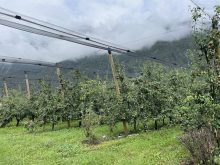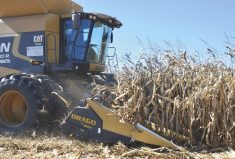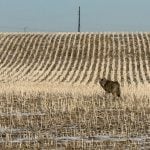Corn seed can be a big annual investment, so choosing the right hybrid mix is an important task.
“The most yield potential a crop has is when the seed goes into the ground,” says Paul Sullivan, certified crop advisor with Sullivan Agro Inc. “After that, stresses like emergence, weather, nutrient availability and timing all pull back on the total genetic potential of the seed.”
Sullivan says farmers need to do research, discuss seed options and consult advisers, like seed representatives and agronomists, when making their selections. Here are three considerations.
Read Also

Swiss plant breeders focus on new varieties for climate resilience
In Switzerland, the national agricultural policy to 2050 focuses on food security through sustainable development from production to consumption.
1. Maximize Return on Investment
Hybrid selection is one of the biggest determining factors when it comes to yield. And in many cases, yield is the greatest determining factor in return on investment (ROI).
“Selecting a hybrid that is appropriate for your farm and growing region is the first step,” says Ben Rosser, Ontario provincial corn specialist.
“Public and private corn trials are conducted across the province, so do your research, ask your neighbours about their experiences and your seed rep for the most local information on performance and yield.”
Bushels as well as other economic factors must be considered, like dry-down capabilities to decrease potential drying costs, seed cost and pest or disease tolerance.
“Hybrid maturity and end use markets also need to fit into the selection criteria, especially when it comes to managing risk tolerance for weather and field conditions,” says Rosser, who notes that soil conditions, planting and target harvest timing must be considered for each field when selecting for maturity.
Martey Vermey, senior agronomist with Grain Farmers of Ontario, says that because corn is driven by heat, selecting the appropriate heat units and relative maturity go hand in hand.
“Maturity will differ across growing regions and between hybrids, so be sure to select appropriately for your farm,” he says.
2. Match your management style
“Every hybrid is different and requires a different management approach to maximize genetic potential,” says Vermey.
Knowing more about hybrid genetics allows farmers to take advantage of seed strengths and farm around the weaknesses. Population, planting window, soil type, fertility, crop protection products and harvest timing all need to be accounted for.
“Ask yourself what problems you want to solve through seed traits,” says Vermey, who recommends that farmers make a list to evaluate their risks and how their management approach will support selected hybrids.
Problems or risks can include weed control, insect pressures, standability, emergence issues, soil conditions, desired planting and harvesting windows, and nutrient concerns.
Disease tolerant hybrids can be beneficial, especially in regions where northern corn leaf blight, gibberella ear rot and tar spot are common.
Vermey reminds growers that tar spot is spreading throughout Ontario and is established as an overwintering disease in the southwest. He says it’s a new disease to watch for and consider in hybrid selections.
Sullivan notes that western bean cutworm is a known pest in eastern Ontario, where growers are selecting hybrids for control of this yield-reducing pest.
“Farmers need to match hybrids to overall management styles and equipment,” says Vermey. “Individual field conditions also need to be accounted for when it comes to aligning corn seed with crop management too.”
Trait resistance is another factor, especially in areas where corn rootworm resistance has emerged. Vermey reminds any farmers who grow corn on corn to follow recommended management practices and use trait technology wisely.
While resistance to European corn borer hasn’t been identified in Ontario yet, (through it has been confirmed in the Maritimes and Quebec), Vermey reminds farmers to “monitor your fields diligently and be aware of any breakthrough insects you think you are controlling with traits.”
Ear flex can also be a consideration. Sullivan says all hybrids will flex in at least one of three ways — ear girth, ear length and depth of kernel. Understanding ear flex timing can also be factored into a management approach, especially when considering plant populations.
For those who use variable rate planting equipment and field nutrient-based soil mapping systems, Sullivan recommends paying extra attention to ear flex and working with an adviser to select corn genetics to maximize crop potential.
3. Review and research
Hybrids can change quickly from year to year.
“Use all available resources when deciding hybrid selection and placement,” says Rosser, who recommends farmers also consult with gocrops.ca. This online resource is home to the Ontario Hybrid Corn Performance Trials conducted by the Ontario Corn Committee.
The site includes hybrid comparisons, a provincial corn production heat unit map and the inaugural 2023 Ontario corn hybrid DON screening trial report.
The more data, the better, says Rosser. He recommends reviewing performance data over multiple growing seasons to get the best picture, and preferably data that has been collected across various growing conditions and environments.
“Look for hybrids with consistent performance across large data sets and multiple conditions. The OCC trials provide a lot of intensive trial data across a large number of hybrids that can help farmers make the most informed decisions.”
Vermey also recommends talking to neighbours to learn what works for them.
“But understand your neighbour’s management — their time of planting, soil, nutrients and fungicide control — will be different from your own, so be sure to carefully research how a hybrid will perform on your own farm too.”
Consulting trusted advisers should also be part of the research. Ideally, advisers should be local so they can help select the best fit for a particular growing region, heat unit level and disease and pest pressures.
“Don’t be afraid to try something new. Try adding one or two new hybrids every year to see how they work on your farm,” says Sullivan, who advises adding new hybrids in small increments or on limited acres to reduce risk.
He also recommends on-farm strip trials to measure performance and inform future hybrid selection.














